Olympiad Notes: Length, Weight And Capacity | Mathematics Olympiad for Class 1 PDF Download
| Table of contents |

|
| What is Measurement? |

|
| Length |

|
| Weight |

|
| Capacity |

|
What is Measurement?
Measurement is a process of finding a number that shows the amount of something.
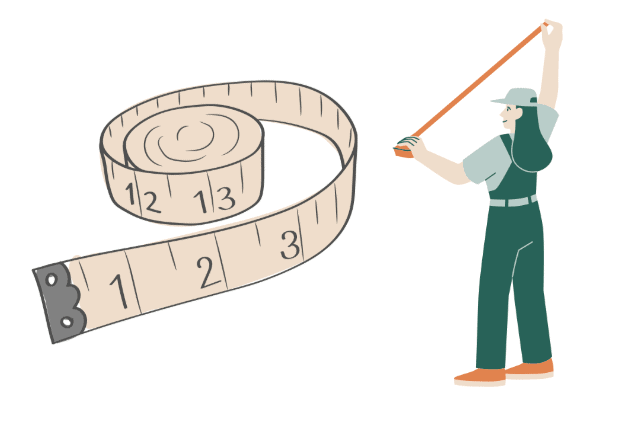
- The concept of measurement usually involves comparison between different objects like bigger ball, longest pencil, heavier bag or taller boy.
- However, this comparison is based on certain properties like length, weight and capacity which can be measured.
- Here students will learn how to measure these properties.
Length
What is length?
- Length is the measuring term that tells how long or short an object is.
- Length of the objects can be measured using ruler, measuring tape or measuring rod.
The length of pencil is about 6 clips long
The length of scale is about 7 crayons long.
- Length of objects can also be measured using non-specific tools of measurement like finger, hand span, etc.
(i) Long or Tall Body
- A body which has more length or more height is called longer or taller body respectively.
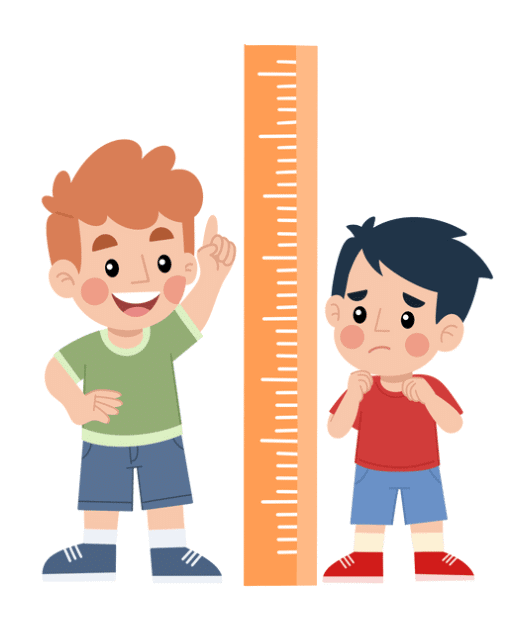
(ii) Short Body
- A body which is short in length is called a short body.
- The words 'longer' and 'shorter' are used to compare the length of the objects which are lying down.
- The words 'taller' and 'shorter' are used to compare the height of the objects which are standing up.
Examples

The process of associating numbers with physical quantities that may help in comparing different object properties.
Standard Units of Measuring Length
- Centimetre (cm) for smaller lengths
- Metre (m) for longer lengths.
- 1m = 100 cm
Weight
What is weight?
- Weight is the measuring term that tells how heavy an object is.
- Weight of objects can be measured using a weighing balance.
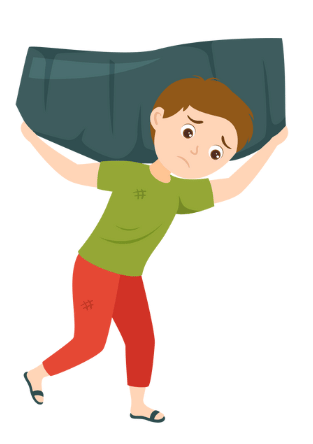
(i) Heavy Object
An object which has more weight is called heavy object. All objects which are large in size and hard are usually heavy.
(ii) Light Object
An object which has less weight is called light object. All objects which are small in size and easy to handle are called light objects.
- The words 'heavier' and 'lighter' are used to compare the weights of different objects.
Examples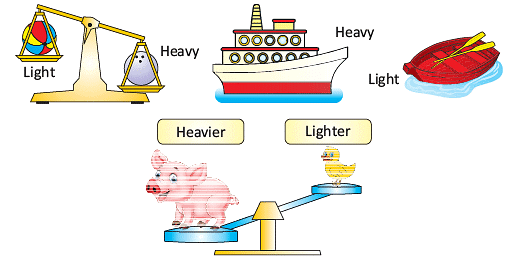
Standard Units of Measuring Weight
- Kilogram (kg) for heavier objects.
- Gram (g) for lighter objects.
- 1 kg = 1000 g
Capacity
What is capacity?
• Capacity is the measuring term that how much amount of liquid a container can hold.
• We can measure the capacity of a bigger container by checking how many small containers of liquid the bigger container can hold.
Examples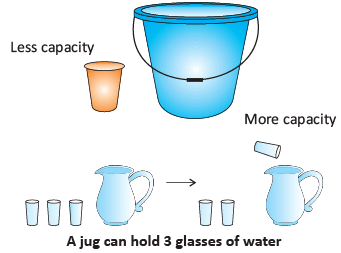
|
29 videos|114 docs|69 tests
|
FAQs on Olympiad Notes: Length, Weight And Capacity - Mathematics Olympiad for Class 1
| 1. What is meant by length, weight, and capacity in Class 1? |  |
| 2. How are length, weight, and capacity measured in Class 1? |  |
| 3. What is the importance of understanding length, weight, and capacity in Class 1? |  |
| 4. How do length, weight, and capacity relate to each other in Class 1? |  |
| 5. Are there any specific tools or instruments used to measure length, weight, and capacity in Class 1? |  |





















